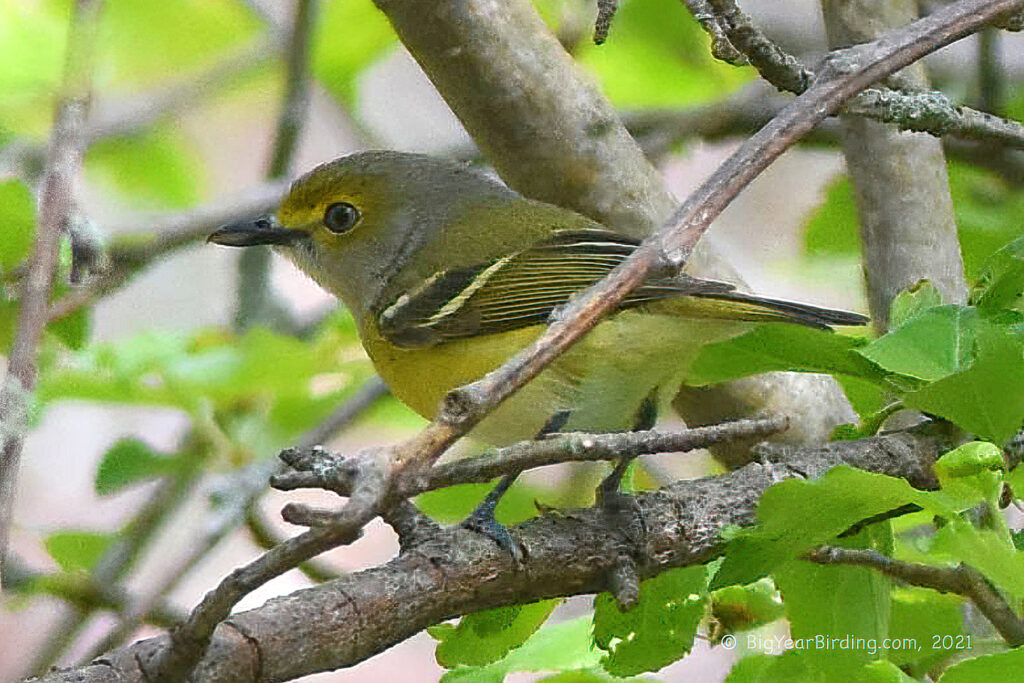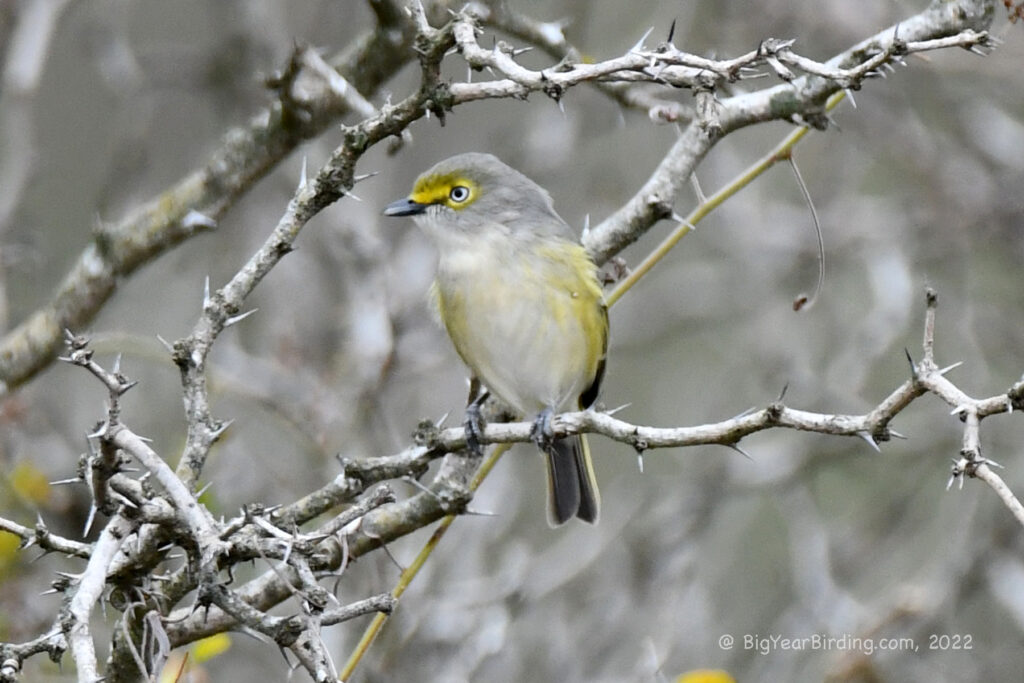The White-eyed Vireo (Vireo griseus) is a small migratory bird that belongs to the Vireo family. Adults are approximately 4.5 inches in length, weigh about 0.3 ounces, and have a wingspan of around 7 inches. These birds have a distinct white iris, giving them their name. Additionally, they have a yellow-green back and head, a gray crown, and a white throat and belly. Males and females are similar in appearance, but females tend to be slightly duller in coloration.
White-eyed Vireos are commonly found in scrublands and thickets, and their habitat extends from the eastern United States to Central America. They are often spotted in the southern United States during breeding season, from March to August, and migrate to Mexico and Central America during the winter months. During migration, they can be spotted in coastal regions and forested areas.
One of the distinguishing field marks of the White-eyed Vireo is its song, which is loud and distinctive. The song is often described as a series of phrases, including “quick, pick up the beer check,” and “whatcha doin’ over there, Sue?” In addition to their unique vocalizations, White-eyed Vireos can be identified by their behavior. They are often observed foraging in the canopy, hopping and flitting between branches to capture insects.
White-eyed Vireos are known to be territorial and will defend their breeding territory aggressively. They build cup-shaped nests that are typically located in shrubs or low trees, using materials such as grasses, twigs, and bark strips. Females lay a clutch of 3-5 eggs, which they incubate for approximately two weeks. The chicks fledge after 10-12 days.

Conservation efforts for the White-eyed Vireo focus on preserving their habitat, as they are dependent on scrubland and thicket ecosystems. They are considered a species of least concern by the International Union for Conservation of Nature (IUCN). Despite their relatively stable population, habitat loss due to human development and natural disasters remains a concern for the conservation of this species.


